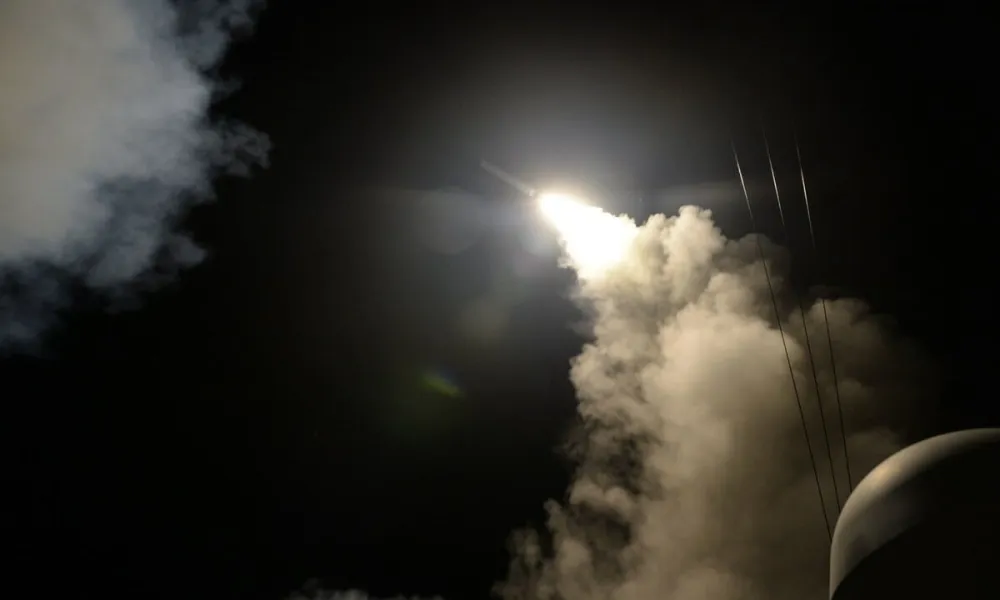Tomahawk missiles, a symbol of US military might for decades, have once again returned to the frontlines of a complex battlefield equation. This time, a debate on their use in the Ukraine war, as Volodymyr Zelenskyy is pushing for their deployment by Washington.
The Ukrainian President wants to strengthen his arsenal with Tomahawks for the purpose of conducting long-range deterrence operations, seeking a game changer.
Meanwhile, Donald Trump is considering the Tomahawks as a carrot and stick, a leverage tool that can bring an end to the three year conflict.
He employed a similar strategy in the Middle East, where he pressured Netanyahu into accepting the first phase of his peace plan, a ceasefire.
In any case, Washington will need to balance support for Kyiv and avoiding direct confrontation with Moscow, as the Kremlin has already called the delivery of missiles with a range exceeding 500 kilometres as a "red line."
Why Do the Ukrainians Want the Tomahawks?
Analysing the capabilities of the missiles, Volodymyr Zelensky is requesting them as he aims to achieve a strategic shift for Ukraine—turning from defence... to selective long-range deterrence.
‘The balance on the battlefield doesn't just shift with armies; it changes when distances change," a Ukrainian defence analyst told the Kyiv Independent.
If the US decides to proceed, Kyiv will acquire a means that could decide even the outcome of the war.
But, as often happens with war technology, the true power of the Tomahawks will not be measured only in kilometres or kilograms of explosives, but in the political will to use them—and in the balances that will be shaped around this use.
How Many Tomahawks Can Ukraine Get?
According to a DW report, it’s not clear how many Tomahawk missiles the US has in its stockpile, nor how much each one will cost.
Zelenskyy remarked that if the country acquires these missiles, he will strike specific Russian military installations.
The reason is that Tomahawks are expensive, although prices vary depending on the country purchasing them.
The Netherlands, for example, pays $12.5 million (€10.6 million) per missile, while Japan pays only $4.25 million, possibly because the US considers Japan's neighbour China as a significant security threat.
‘If we take an average PURL funding package of half a billion dollars and use Japan's price, that would buy approximately 117 missiles. Using the Dutch price, it would be significantly fewer’, analyst Oleg Katkov told Deutche Welle.
The production rate for all Tomahawk variants is approximately 50 per year. That's not very much, which means Ukraine will certainly not receive thousands, perhaps not even hundreds of missiles.
Whether Ukraine receives any at all, or only a certain number, will determine how Kyiv will use them and whether they could change the course of the war.
They Can Threaten Russia
This is not the first time Russia has faced Tomahawk missiles.
They were used to destroy Russian air defense targets in Syria in 2017 and 2018. They deploy complex navigation systems, giving adversaries only a few seconds to react once the missiles are detected by radar.
Intercepting them requires a dense network of low-level radars, rapid target identification, and synchronised air defence.
‘Russian [defence] systems were covering the Syrian targets at that time, but failed [to shoot down the Tomahawks],’ Katkov noted, adding that the missiles are ‘particularly effective when launched in salvos, as overwhelming air defense systems increases their success rate.’
Russian S-400 or Pantsir systems, seem to be vulnerable against Tomahawks.
The missile's long-range capabilities would allow Ukrainian forces to strike key military targets deep inside Russia, at distances up to 1,600 kilometers (approximately 1,000 miles).
‘Several Russian weapons factories could be destroyed,’ Katkov noted.
The American Institute for the Study of War (ISW) also believes that Ukraine could use Tomahawks to cause significant damage or destroy key military installations inside Russia, such as the drone factory in Yelabuga, Tatarstan, or the Engels-2 air base in Saratov, which Russia uses to launch bomber aircraft for large-scale attacks against Ukraine.
The ISW estimates that 1,600 to 2,000 Russian military targets could be within range of the Tomahawks.
Tomahawks as Leverage Against Russia
"If the war [in Ukraine] doesn't end, I might send Tomahawks," Donald Trump said recently in an attempt to bring Russia back to the negotiating table, according to a Euronews analysis.
The Kremlin has warned that the American president's statement causes ‘extreme concern’ in Russia, adding that the war is entering a ‘dramatic moment, given that tensions are escalating.’
Furthermore, Putin held a two hour phone conversation with Trump before Zelensky arrived at the White House to meet with the US President yesterday. It seems it had the desired effect on the Moscow front, as Zelenskyy left without a clear commitment on the Tomahawks.
